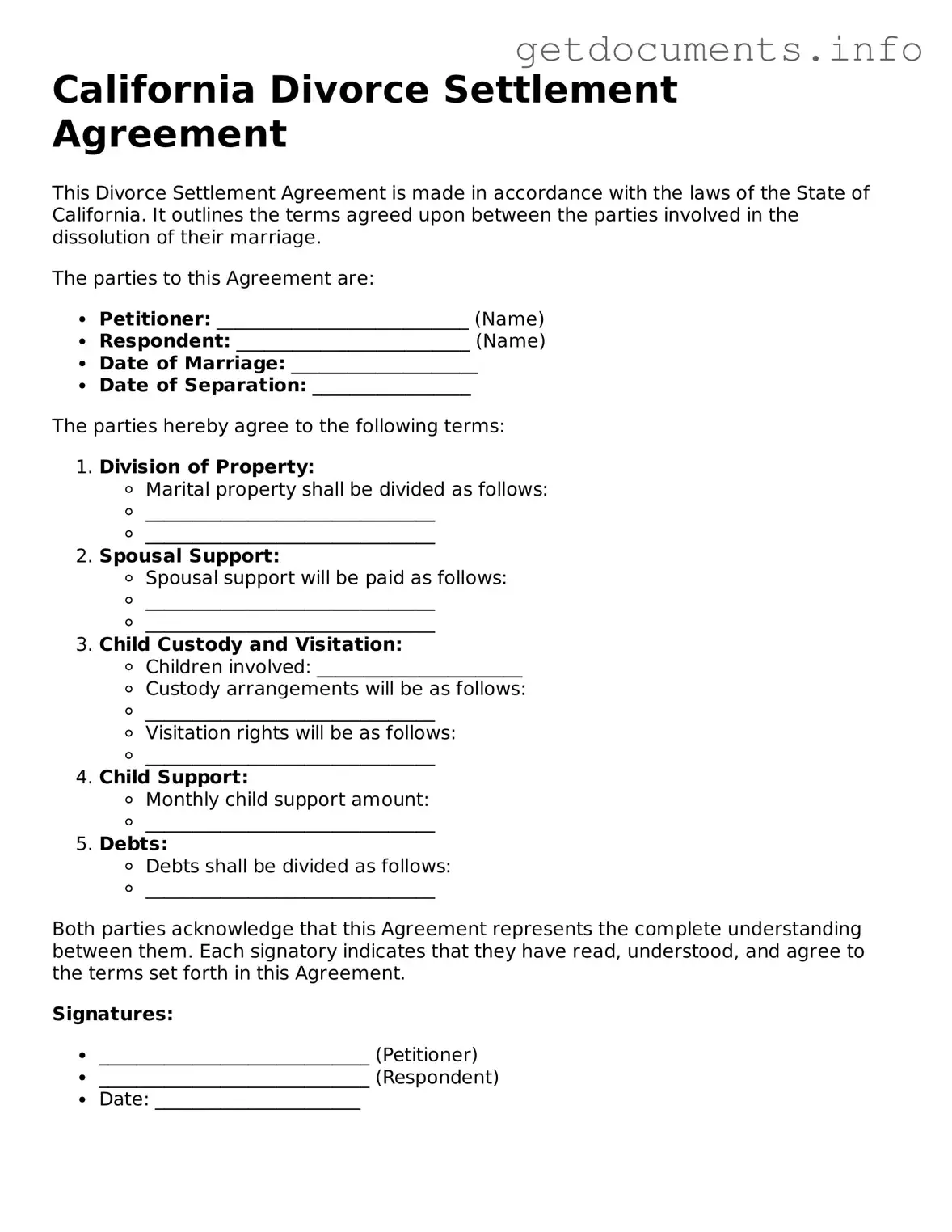Free Divorce Settlement Agreement Template for California
The California Divorce Settlement Agreement form is a legal document that outlines the terms agreed upon by both spouses during a divorce. This agreement typically covers important aspects such as property division, child custody, and support obligations. Completing this form is a crucial step in finalizing a divorce, ensuring that both parties understand their rights and responsibilities.
Ready to get started? Fill out the form by clicking the button below.
Access Divorce Settlement Agreement Editor
